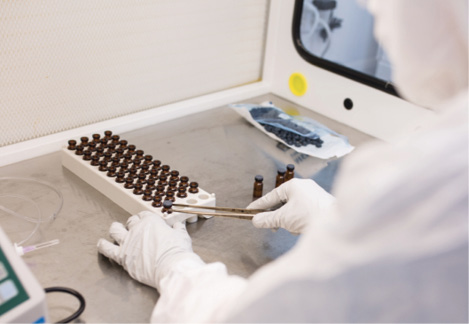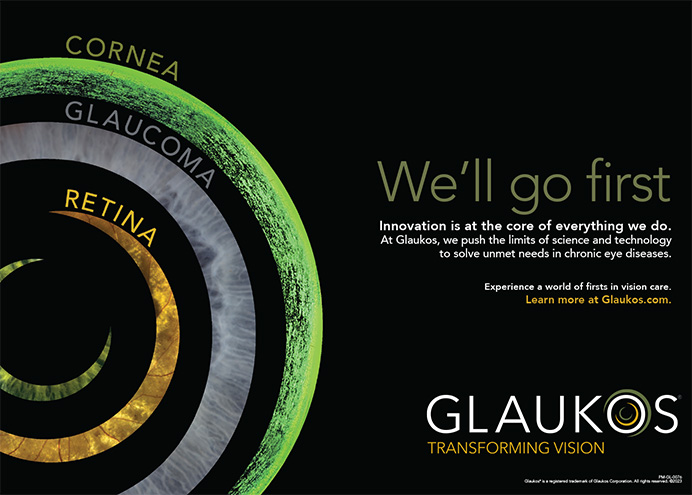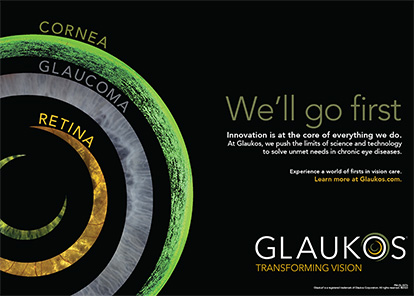
Physicians and patients are being squeezed from every direction. Drug benefit deductibles have never been higher, causing patients to “share” more of the cost of goods and services they consume. For physicians, more processes are being bundled, and despite doctors’ rising costs, payments from the Centers for Medicare & Medicaid Services (CMS) are stagnant. How many physicians refer to meaningful use as “meaningless use”? How many are tired of pharmaceutical companies’ taking old, inexpensive drugs, tweaking them slightly, and then increasing the price to patients and making almost as much on cataract surgery as the ophthalmologist? Rebates, prescription discount cards, uncovered drugs—doesn’t it seem like it pays better these days to be a middleman instead of an actual health care provider? Things are out of balance.
This article shares a few points I recently made in a monograph on drug pricing policy and compounding. I believe that compounding can be used to restore sanity and equilibrium to patients’ cost sharing and to drug pricing for public and private payers.
ISSUE No. 1
Medicare and Medicaid combined create the largest purchaser of drugs in the world, and their policies have enormous consequences for the entire drug industry. Currently, CMS blocks payment for compounded medications, even if they are manufactured to the same standards as FDA-approved drugs.
AT A GLANCE
• Medicare Part D policies basically guarantee that the Centers for Medicare & Medicaid Services and patients pay the highest cost possible for many drugs.
• The Centers for Medicare & Medicaid Services and FDA policies are stifling competition from high-quality compounded medications that could have a curative effect on a drug market that seemingly has no price control mechanisms.
• Procedural bundling, if not done correctly, threatens to stifle innovation.
Specifically, CMS avoids paying for necessary compounded drugs because of the way the agency defines a drug. For example, Medicare Part D defines a drug as a “finished drug product that is FDA approved.” This means that a finished drug product not only contains active pharmaceutical ingredients (APIs) but also extra excipients, fillers, colorings, and other materials. Strangely, lower-cost bulk APIs, all of which are FDA approved, used as components of compounded drugs, do not meet this definition and are not covered by Part D. As a result, the only way to get CMS to pay for a lower-cost compounded drug is to ignore the science of pharmaceutical compounding and “crunch” and “mix” commercial drugs into the compounded drug. This is neither good for patients nor economically sound for CMS. I wonder who thought of this policy. Could it be the companies that sell commercial drugs?
According to a March 2016 report from the US Department of Health and Human Services, Part D drug costs nearly doubled between 2005 and 2014, increasing from $9.4 billion in 2005 to $18.5 billion in 2014.1 Rather than push for open competition and access to lower-cost compounded medications made from FDA-approved bulk APIs, Medicare needlessly continues to spend billions of dollars on branded commercial medications, including those that are used as ingredients in compounded drugs.

Figure. CMS continues to block compounded medications, even though many compounding pharmacies abide by the same cGMP and FDA monitoring as drug manufacturers.
There are myriad examples of drugs for which CMS chooses to pay, in the aggregate, billions of dollars each year, instead of allowing lower-cost compounded drugs to compete. For example, Medicare will not pay for a compounded estrogen cream but will pay for a similar branded product, which typically costs 10 times more than the compounded version. CMS will pay the notorious Turing Pharmaceuticals $750 for a Daraprim (pyrimethamine) pill rather than $0.99 for a compounded pyrimethamine alternative from my company, Imprimis Pharmaceuticals. CMS does not seem to care that the bulk API in our compounded pill is manufactured in the exact same plant as the bulk API used by Turing to make its pill. Not taking advantage of this opportunity is a legal but perverse transfer of tax dollars from the public treasury to pharmaceutical companies. The money saved, if current Good Manufacturing Practice (cGMP) compounded drugs manufactured to the same standards and FDA-approved drugs were allowed to compete for payment dollars, would move the proverbial needle—even for the massive Medicare program.
ISSUE No. 2
The CMS policy of bundling is limiting patients’ and physicians’ choices and killing innovation in ophthalmology. The CMS policy regarding Dropless Therapy (Imprimis Pharmaceuticals) is a prime example.
Dropless Therapy has been used in more than 400,000 cataract procedures to prevent postoperative infection and manage inflammation. The Dropless method uses a proprietary compounded formulation of a steroid (triamcinolone) and antibiotic (moxifloxacin) that is injected into the eye in a single administration at the conclusion of cataract surgery (Tri-Moxi; Imprimis Pharmaceuticals). In the vast majority of cases, leading physicians have reported that an intravitreal Tri-Moxi injection supplanted the need for several weeks of topical eye drops.2,3 A recent study reported that the use of Dropless Therapy could save Medicare and Medicaid more than $7.1 billion over 10 years compared to the cost of topical drops.4
Again, Medicare does not cover compounded drugs from bulk APIs such as Dropless Therapy. Before 2015, CMS was silent as to whether patients could legally choose to follow their doctor’s prescription and save money—for themselves and CMS—by paying cash for Dropless Therapy and avoiding the high cost of traditional eye drop therapies. In January 2015, CMS abruptly changed its policy by stating that it “covered” Dropless Therapy via the Part B bundled fee and further declared that physicians could no longer allow patients to pay for the cost. (CMS did not cite any concern over quality issues or compounding per se.) With this targeted change in policy, physicians and ambulatory surgery centers must pay for Dropless Therapy on their patients’ behalf, because the bundled fee paid for cataract surgery has not increased. I call this the equivalent of making teachers pay for their students’ schoolbooks. Despite the incredible charity of the ophthalmologic community, the vast majority of physicians will not pay for their patients’ postsurgery medications.
This policy may seem to have an impact on Imprimis alone, but I would argue that it may affect other companies as well. If Medicare does not allow patients to share the cost of products and services that are the best course of care for them in an environment that is driven by static bundled payments, the financial impact on most new innovations related to cataract surgery will be devastating. Without the ability to get paid, there is little incentive to innovate. Temporary pass-through codes are just that—temporary—and they are not available for cGMP compounded drugs. As bundling and other demands on physicians to do more for the same or less money continue to roll out across the US health care economy, this policy will affect every manufacturer within ophthalmology and health care as a whole. When misguided policies hamper or kill innovation, especially low-cost innovation like Dropless Therapy, patients and physicians lose, as do taxpayers.
In the case of lower-cost compounded alternatives such as Dropless Therapy, by not allowing patients to volunteer to share costs, CMS is effectively forcing them—many of whom are elderly and on fixed incomes—to pay more for eye drops. Inexplicably, CMS is also forcing itself to pay for the expensive Medicare Part D benefit.
INCOHERENT POLICIES
The US Government Accountability Office found CMS’ policies on compounded drugs so ambiguous that it recommended that “CMS clarify its Medicare Part B payment policy to either allow or restrict payment for compounded drugs containing bulk substances and align payment practices with this policy.”5 CMS has not budged.
CMS is doing a disservice to patients and taxpayers alike by refusing to pay for lower-cost compounded medications, particularly when they are made to the same high standards as any other manufactured drug (Code of Federal Regulations 21, parts 210 and 211, also known as cGMP). Moreover, CMS denies patients the opportunity to save money by choosing to pay for lower-cost safe compounded medications themselves.
CONCLUSION
At a recent meeting I attended, a senior executive from a large ophthalmology company that is biased against lower-cost compounded alternatives (for obvious reasons) stressed that any drug used in ophthalmology should be “safe and effective.” This is an axiom of the practice of medicine, but it also happens to be the law. Federal and state law permits the production, dispensing, and use of compounded medications that are made under strict compliance with rigorous quality standards. As such, compounded drugs are used in every hospital in every US city every day of the week. In support of this notion, medical societies such as the American Academy of Ophthalmology and American Society of Cataract and Refractive Surgery have written extensively about the clinical importance of compounded drugs. At Imprimis, the company I run, the FDA is involved in every part of our supply chain and production process. This is a good thing for the safety of the patients we serve. Thankfully, the law allows physicians to prescribe safe compounded drugs, and these products certainly would not be prescribed if they were not efficacious for patients.
Beyond the clinical value of safe cGMP compounded drugs, another nice feature is that these medications do not require rebates or discount cards. There are no “spreads” to pay pharmacy benefit managers. Pharmacists never switch these prescriptions to fit a patient’s insurance coverage. Compounded drugs are affordably priced, and especially when made to cGMP standards, they offer tremendous value to patients and physicians. In deference to the sacrosanct physician-patient relationship and the need for sanity and equilibrium when it comes to the economics and dispensing gymnastics connected to prescription drugs, my hope is that CMS will consider taking advantage of the simplicity, efficiency, and massive savings cGMP compounded drugs offer. Until then, CMS should at least give Medicare recipients the choice to realize these benefits for themselves.
1. Sheingold S, Marchetti-Bowick E, Nguyen N, Yabroff KR. ASPE Issue Brief. Medicare Part B Drugs: Pricing and Incentives. Department of Health & Human Services. http://bit.ly/2o01AXn. March 8, 2016. Accessed April 18, 2017.
2. Tyson SL, Bailey R, Roman JS, et al. Clinical outcomes after injection of a compounded pharmaceutical for prophylaxis after cataract surgery: a large-scale review. Curr Opin Ophthalmol. 2017;28(1):73-80. http://bit.ly/2pMsOOv. Accessed April 21, 2017.
3. Lindstrom RL, Galloway MS, Grzybowski A, Leigner JT. Dropless cataract surgery: an overview. Curr Pharm Des. 2017;23(4):558-564.
4. Andrew Chang & Co, LLC. Analysis of the Economic Impacts of Dropless Cataract Therapy on Medicare, Medicaid, State Governments, and Patient Costs. http://bit.ly/2o0dqRD. October 2015. Accessed April 18, 2017.
5. US Government Accountability Office. Compounded Drugs: Payment Practices Vary Across Public Programs and Private Insurers, and Medicare Part B Policy Should Be Clarified. www.gao.gov/products/D09081. October 10, 2014. Accessed April 18, 2017.




